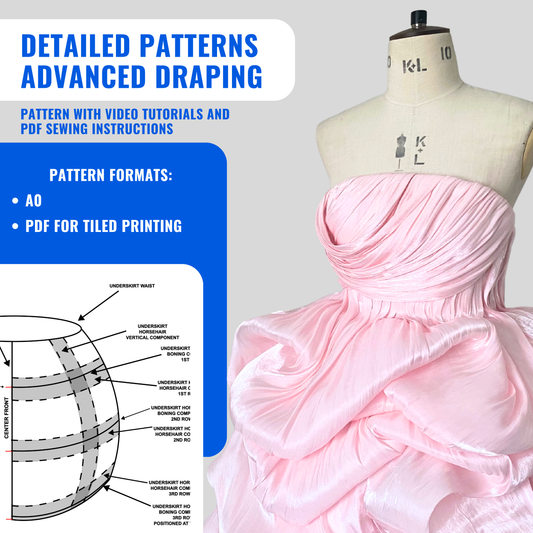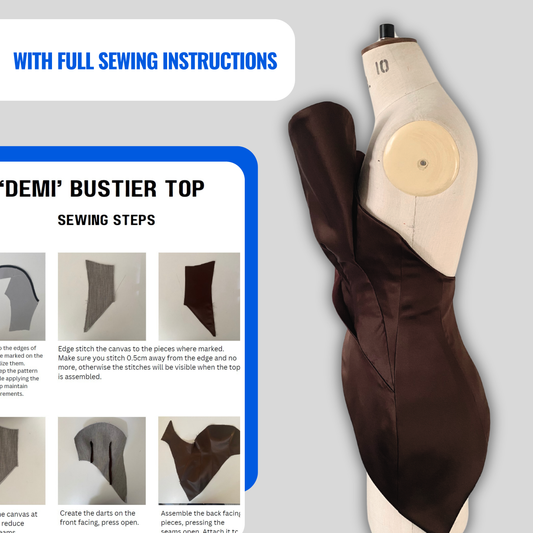The SEAM conspiracy
What I learned from John Galliano and Charles James
The pioneers of fashion taught me one essential truth:
Seams are good. Seams are necessary. Seams elevate a design.
Throughout my career as a pattern cutter, I’ve encountered countless designers who despise seams and darts altogether and expecting you to create magic without them. This often comes from a common issue: reference garments and inspirations are observed, not studied.
We see flawless references on screens, but retouching and lighting distort what the clothes actually look like.
One of my biggest pet peeves?
An A-line dress without a bust dart , complete with drag lines pulling under the bust. Those lines aren’t just “wrinkles.” They’re a symptom of missing shaping around the bust.
Sure, it might pass in an oversized shirt or an avant-garde piece. But the moment you want a closer-fitting silhouette that flatters the body, that shortcut falls apart.
Look at a simple A-line dress without bust darts, those drag lines are already visible, and when graded up into larger sizes, they cause even more distortion at the armholes and shoulders.

The Masters of Strategic Seaming
Charles James: The Architect of Seams
Charles James understood that seams were more than decorative details, they were engineering solutions.
He famously said, “All my seams have meaning – they emphasise something about the body.”
Every seam he drafted was deliberate, a structural decision that shaped both the silhouette and the narrative of the garment.
Take one of his evening gowns as a prime example. At first glance, it seems fluid and effortless. But look closer - every seam tells a story. They’re strategically placed to guide the fabric over the bust, working with the body’s curves instead of against them.

Those seams circling the bust aren’t just design lines, they’re the architectural framework that allows pleats to form correctly. This is where design and technical knowledge comes together. The side bust and underbust seams act as technical anchors, preventing the dreaded fabric bulge and ensuring each pleat lies exactly where it should. Even the front dart has a purpose. Aligned with the pleats above, it integrates into the design language while doing the essential work of shaping.
The lesson: Draping fabric over the bust demands thoughtful engineering. What looks simple on the surface often hides the most complex solutions underneath.
John Galliano: The Master of Disguise
John Galliano’s bias-cut dresses are another major source of inspiration for me. Since his Spring/Summer 1989 collection, Galliano has echoed Vionnet's ingenious bias-cut approach, reimagining it through his theatrical lens.
In many of his designs, seams are camouflaged within the folds, creating the illusion of a seamless construction. But make no mistake — those seams are doing vital work. They’re strategically placed to control the drape, maintain structure, and support that signature liquid bias cut silhouette Galliano is known for.
His mastery lies not in eliminating seams, but in making them disappear visually while they work tirelessly behind the scenes.

The Truth about Seams
The truth is simple: exceptional design isn’t about hiding construction, it’s about mastering it.
Both James and Galliano understood that when used intelligently, seams become the invisible heroes of great fashion.
Every seam in a well-designed garment should serve at least one of these purposes:
- Improve fit and comfort
- Enable the desired silhouette
- Accommodate fabric behaviour and grain direction
- Create visual interest or emphasize body lines
- Solve technical construction challenges
When seams are placed with intent, they stop being “lines on fabric”, they become the architecture of beauty itself.
Until next time,
Heni








